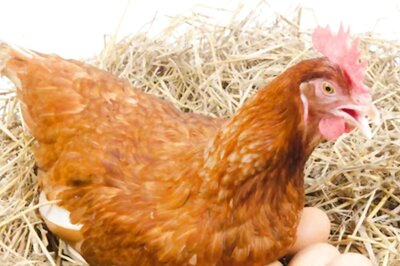
views
Paintbrushes are an essential tool for any artist, whether you are a beginner or an experienced professional. They come in a wide variety of sizes, shapes, and materials, each designed to create different effects on the canvas. Also, as a painter, understanding the different types of brush strokes can help you to create unique and expressive pieces of art. Selecting the right paintbrush can seem like a daunting task. And if you’re a beginner, the process can be too hectic. If you are also looking to know more about paintbrushes, here’s an ultimate guide for knowing your paintbrush.
Types of Paintbrushes
There are two main types of paintbrushes: synthetic and natural. Synthetic brushes are typically made from nylon, polyester, or a combination of the two. They are more affordable, easier to clean, and can be used with a variety of paints, including acrylics, watercolours, and oil paints. Natural brushes, on the other hand, are made from animal hair, such as hog bristle or sable. They are more expensive, but they can create more natural-looking brushstrokes and can hold more paint, making them ideal for larger paintings.
Brush Shapes
There are several brush shapes to choose from, each designed for a specific purpose. They are as follows:
- Flat Brush Strokes: Flat brush strokes are ideal for painting straight lines, geometric shapes, and filling in large areas of colour.
- Round Brush Strokes: Round brush strokes are perfect for creating a variety of textures and for adding details to a painting.
- Fan Brush Strokes: Fan brush strokes are created by using a fan brush to make sweeping motions across the canvas. They are ideal for creating wispy textures and for blending colours together.
- Scrubbing Brush Strokes: Scrubbing brush strokes are ideal for creating a sense of movement and energy in a painting.
- Dry Brush Strokes: Dry brush strokes are created by using a brush that has very little paint on it. They are ideal for creating texture and for adding a sense of depth to a painting.
- Cross-Hatching Brush Strokes: Cross-hatching brush strokes can be used to create interesting patterns and shapes.
Brush Sizes
Paintbrushes come in a range of sizes, from small to large. The size of your brush will be determined by the type of painting you are doing. Larger brushes are best for covering large areas of the canvas, while smaller brushes are ideal for details and intricate work.
Brush Care
Taking care of your paintbrushes is essential to ensure they last as long as possible. After using your brush, rinse it thoroughly with water to remove any excess paint. Use a mild soap or brush cleaner to remove any stubborn paint. Never leave your brushes in water for an extended period, as this can damage the bristles. After cleaning your brush, reshape the bristles and let it air dry before storing it in a brush holder or case.
How to choose the right paintbrushes for your art?
Consider the Purpose of the Brush
The first step in choosing the right paintbrush is to consider what you will be using it for. Brushes are classified according to their intended use. Think about the kind of painting you’ll be doing and choose brushes that are best suited to the task.
Choose the Right Size
The size of your brush will also depend on the type of painting you’ll be making. For bigger paintings, you’ll need larger brushes. For fine details and intricate work, you’ll want a smaller brush. It’s a good idea to have a variety of sizes on hand so you can switch between them as needed.
Invest in Quality
While it can be tempting to go for cheaper brushes, investing in quality paintbrushes can actually save you money in the long run. High-quality brushes are more durable and will last longer than cheaper brushes, which means you won’t have to replace them as often.
Paintbrushes are an essential tool for any artist. Understanding the different types of brushes, shapes, and sizes can help you choose the right brush for the job.
Read all the Latest Lifestyle News here
















Comments
0 comment